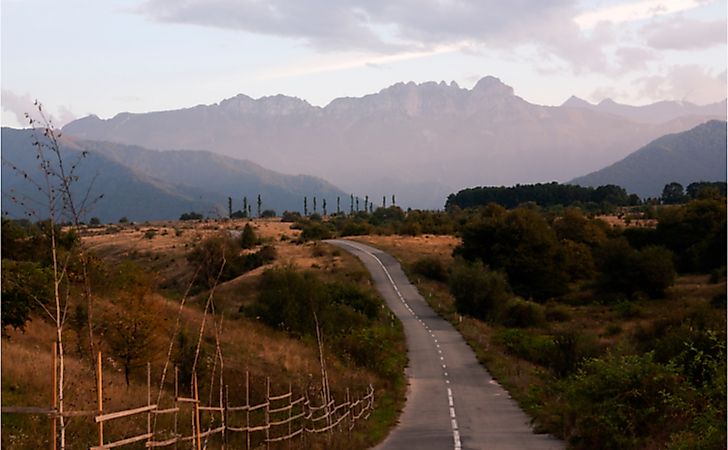Is the North Caucasus a Country?

The Caucasus is a region located between the Caspian Sea and the Black Sea and falls within four countries, namely Georgia, Russia, Azerbaijan, and Armenia. The region contains the Caucasus Mountains, which includes the Greater Caucasus mountain range that is considered a boundary between Western Asia and Eastern Europe. The Caucasus region is divided into two parts: the North Caucasus and South Caucasus. The North Caucasus is also referred to as Ciscaucasus, while the South Caucasus is sometimes referred to as Transcaucasus. The Greater Caucasus mountain range is situated in the northern part of the region, while the Lesser Caucasus mountain range is located in the southern part.
Political Geography Of North Caucasus
The North Caucasus, commonly known as Ciscaucasus, is located in the northern region of the Caucasus. It contains much of the Greater Caucasus mountain range. The North Caucasus is not a country, but rather is a region that consists of Southern Russia and the northernmost parts of Azerbaijan and Georgia. The Northern Caucasus is located between the Caspian Sea to the east and the Black Sea to the west and is bordered by Russia’s Southern Federal District to the north. The Ciscaucasus is included in the Southern Federal District and North Caucasian Federal District of Russia, consisting of several federal subjects such as Stavropol Krai, Krasnodar Krai, and several other constituent republics. Generally, the northern section of the North Caucasus is considered part of Eastern Europe.
The mountainous North Caucasus is considered to be among the most beautiful places in Russia. It contains the highest peaks in both Russia and Eastern Europe, and its climate varies from subtropical in the western part, near the Black Sea, to a more arid climate in the eastern part, near the Caspian Sea. The region also has several rivers that run through the deep gorges.
History Of The North Caucasus
Historically, the North Caucasus was characterized by the fertile Pontic steppe, which has since been completely grazed and tilled. The area is bounded to the east by the Caspian Sea and to the west by the Sea of Azov. Some sources list the region as part of Europe, at the border between Asia and Europe. The former Soviet Union’s outer borders of the North Caucasus Krai is the same as the current North Caucasus Economic Region (Raion). The region had several administrative centers in the past, including Rostov-on-Don, Pyatigorsk, Ordzhonikidze, and Voroshilov.
Population And Demographics
The Caucasus is a linguistically diverse region. While Russia has several autonomous ethnic regions in which ethnic Russians form the majority, the Northern Caucasus is an exception, as non-Russian minorities constitute the majority. It is estimated that there are over 50 ethnic groups in the Caucasus. Some of the languages spoken in the region include Indo-European languages, Turkic languages, as well as Northeast Caucasian languages, and Northwest Caucasian languages.
Conflict In The North Caucasus
The Northern Caucasus has been the most unstable region in Russia since the start of the 19th century. Following the Caucasian Wars, Russians performed ethnic cleansing in the area, resulting in the indigenous population, primarily Circassians, to become expelled and forced to move to the Ottoman Empire. Following the end of the Second Chechen War in 2009, the North Caucasus experienced an insurgency between militants and Russia. The conflict has been concentrated in the republics of Dagestan, Chechnya, and Ingushetia.











